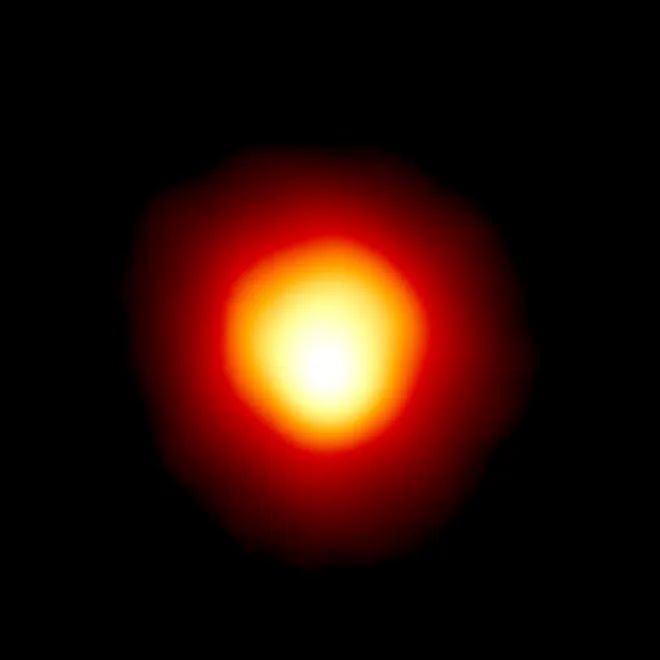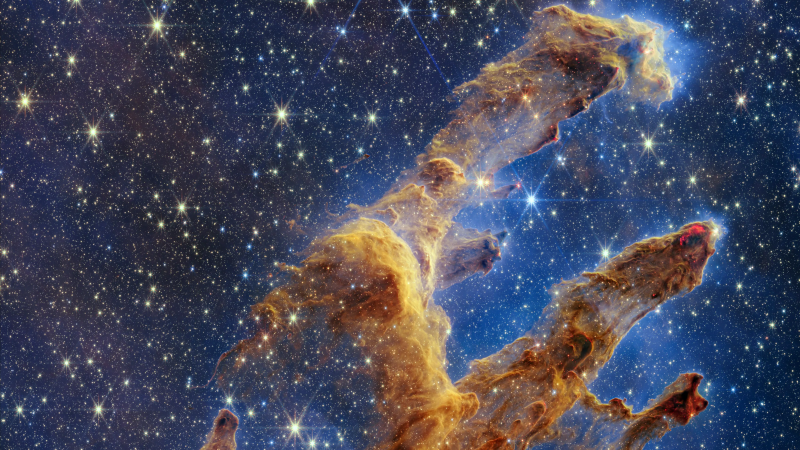One-of-a-kind eclipse: Asteroid to pass in front of star Betelgeuse. Who will see it?

Betelgeuse, a massive star bigger and brighter than our sun, will momentarily blink out next week when an asteroid passes in front of it, creating a rare eclipse viewable to millions.
The celestial event should only last for mere seconds, which is still time for astronomers to make observations about the red supergiant star in the constellation Orion. Millions of people along a narrow path of Earth should also be able to catch a fleeting glimpse of the cosmic spectacle, which will occur Monday night when the asteroid Leona flies by.
Here's what to know about this one-of-a-kind eclipse.
'We found the tomato:'Mystery of a tomato missing in space for months has been solved, and a man exonerated
When will the asteroid pass in front of Betelgeuse?
The asteroid Leona is a slowly rotating space rock in the main asteroid belt between Mars and Jupiter. It's expected on Monday to obscure Earth's view of Betelgeuse for up to 15 seconds.
At approximately 8:17 p.m. Eastern Time, one of the sky's brightest stars will be temporarily blocked, or "occulted" by the asteroid. The effect for us here on Earth could be the appearance of a total eclipse of the star, or a partial one that could cause a "ring of fire" eclipse with a blazing circular halo.
How can I see the rare eclipse?
A limited stretch of Earth should be in a position for stargazers to witness the celestial event, which is expected to span a narrow corridor stretching from Asia to southern Europe, Florida and eastern Mexico.
In the United States, people in Miami and the Florida Keys should be able to catch a glimpse.
Estimated to be 700 light-years away, Betelgeuse is visible with the naked eye. But binoculars and small telescopes are sure to enhance the view from the ground.
If you don't live along the path of the eclipse, not to worry: The Virtual Telescope Project will provide a livestream feed of the event from Italy.
The International Occultation Timing Association also has a special page that includes a downloadable Google Earth file showing the complete path.
What else should I know about the star Betelgeuse?
Scientists hope the event provides them with an opportunity to learn more about both the star Betelgeuse and the asteroid Leona.
At just 10 million years old, Betelgeuse is considerably younger than our 4.6 billion-year-old sun, according to NASA. It's predicted fate as a supernova, when it will experience a violent explosive death within 100,000 years, has made the star one of particular interest to astronomers who hope to create a map of its surface.
But Betelgeuse is also intriguing because of its size and brightness – its thousands of times brighter and 700 times bigger than the sun, NASA says.
Astronomers also anticipate gaining insights into Leona by gathering data regarding the oblong asteroid's size, shape and composition, said astronomer Gianluca Masi, founder of the Virtual Telescope Project.
These kind of celestial events "are very useful to constrain the shape of the asteroid involved. Here, we hope to even investigate the surface of the involved star, too," Masi said in a statement. "The importance of the upcoming occultation is undoubtedly extremely high."
Contributing: The Associated Press

Eric Lagatta covers breaking and trending news for USA TODAY. Reach him at elagatta@gannett.com
Disclaimer: The copyright of this article belongs to the original author. Reposting this article is solely for the purpose of information dissemination and does not constitute any investment advice. If there is any infringement, please contact us immediately. We will make corrections or deletions as necessary. Thank you.




